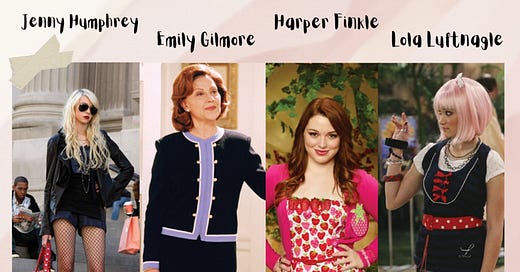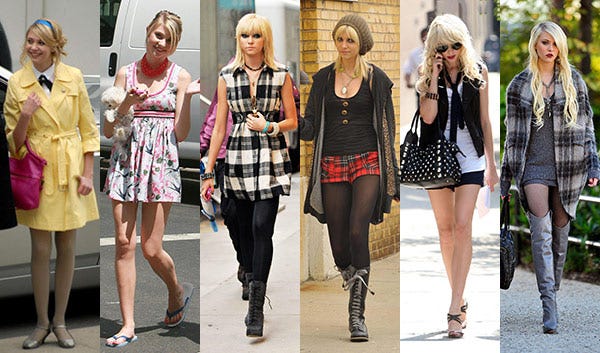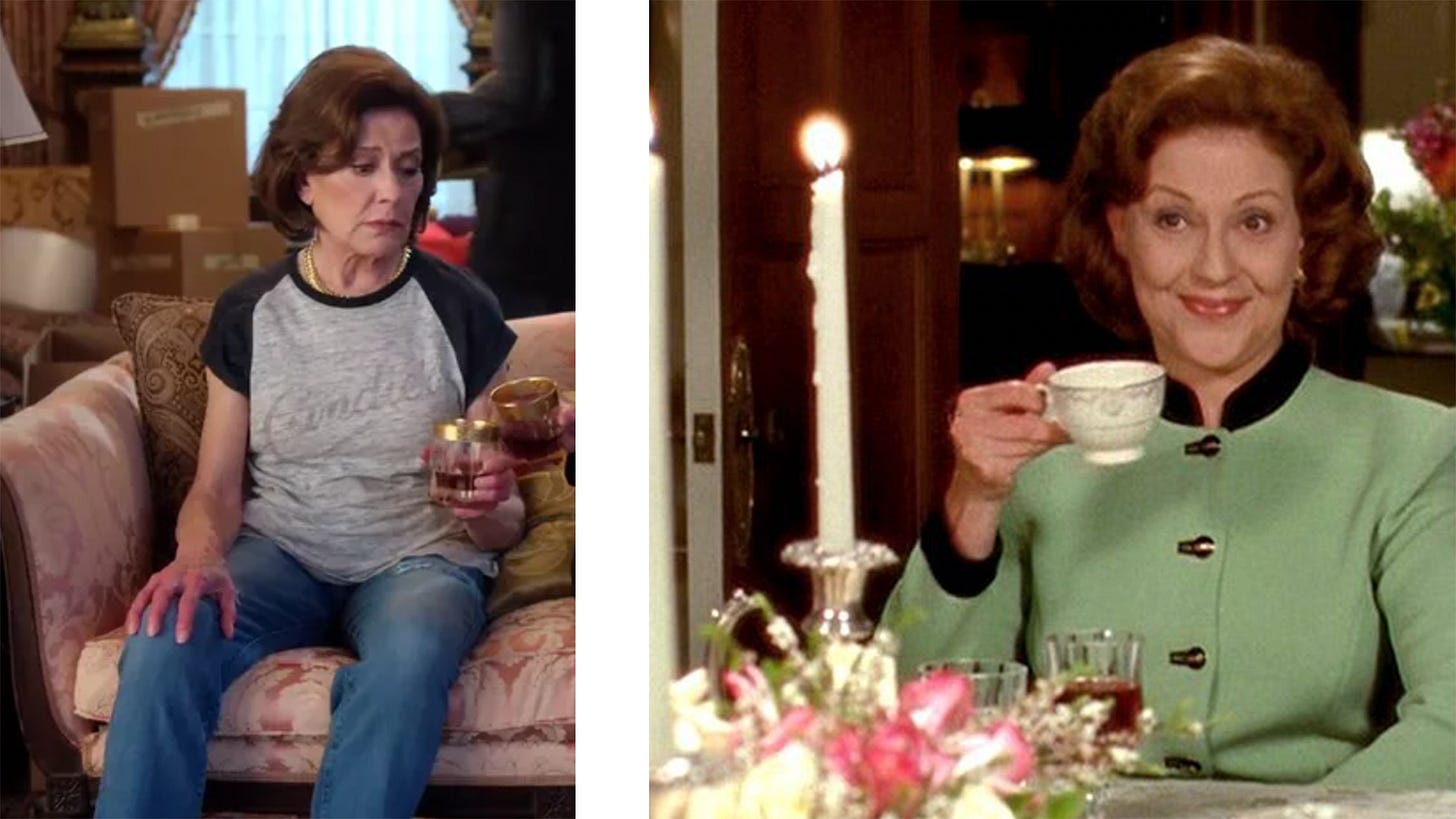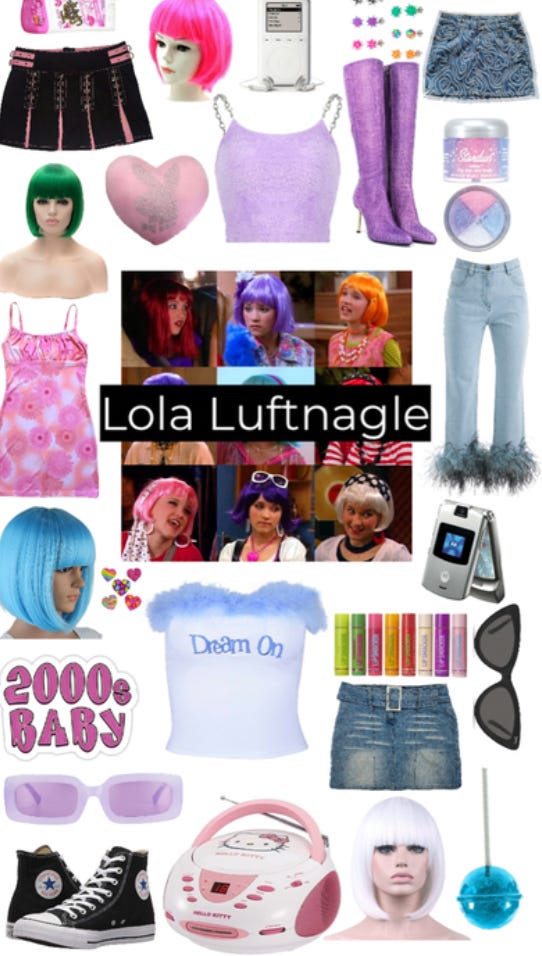Hey Fashion Talk readers— Happy Saturday! Get ready to stroll down memory lane with Vrinda Neb as she dives into the captivating world of 2000s television icons.
From the sassy styles of Jenny Humphrey to the timeless elegance of Emily Gilmore, Vrinda unpacks the fashion evolution of these TV icons and explores the enduring influence they've left on today's trends. So, buckle up and join us on this nostalgic fashion journey – it's about to get iconic!
Happy reading,
Amarissa
When asked about revolutionary fashion inspirations from the 2000s, what are the first names that pop up? Carrie Bradshaw? Blair Waldorf? Cher Horowitz? These characters are known for their generational unique and memorable styles, whether these trends represent plaid ensembles, mini skirts, or kitten heels.
However, in our ever-evolving landscape of styles and trends, particularly fueled by social media platforms like TikTok and a diverse array of influencers, categorizing these three types of characters under the label of “most inspirational” overlooks a multitude of perspectives and opinions within the fashion industry.
To fully understand the trends in our world today and those forecasted into the future, we must take a deeper dive into characters and icons that represent various perspectives, beyond what initially pops up in our head. This could mean exploring side characters, controversial outfits we may have questioned (you either love it or hate it!), and not-your-everyday fashion enthusiasts. For me, these characters include Jenny Humphrey (Gossip Girl), Emily Gilmore (Gilmore Girls), Harper Finkle (Wizards of Waverly Place), and Lola Luftnagle (Hannah Montana).
Jenny Humphrey (Gossip Girl)
Was she a villain? Was she a victim? I guess it depends on who you ask but there is no doubt that this amateur designer from Brooklyn knew her way around leather jackets, fishnet stockings, and studded accessories. Jenny experienced a major style shift between the first two seasons, and this continued throughout the series. In season 1, at first sight “Little J” played the freshman wannabe, with one goal: to become the ultimate IT girl. She covered herself from head to toe in satin dresses and colored tights, playing the innocent “Park Avenue Princess” that she always wanted to be but knew she never was.
Post rejection from this lifestyle, Jenny entered what some would call her villain arc: dyed her hair white, invested in the darkest shade of smokey eye makeup, and styled herself in the shiniest silver jewelry in Brooklyn. Despite this 180-degree switch, it became quite apparent that this is who Jenny was meant to be all along: confident, independent, and a leader in her own right, rather than following the ideals of her Upper East Side classmates.
Jenny’s style evolution symbolized her journey as a young woman discovering who she is and who she is meant to be. The combination of shades in the outfit on the far right side of the value scale, coupled with makeup that stood apart from her peer’s nude, french tip nails and bright pink lipstick, showcases her fashion as a powerful form of self-expression. During the early 2000s, the notion of wearing anything beyond mini skirts and straightforward, simplistic combinations was virtually unheard of and often met with disapproval. Unlike today, where a more diverse range of styles is prevalent on television, the fashion landscape of that era was largely characterized by these conventional norms.
Therefore, Jenny's adoption of a grunge-inspired look in the late 2000s, when GG aired, represented a departure from these norms. Her intense style choices challenged the status quo and paved the way for a new genre of fashion, particularly for individuals who didn't fit the mold of the typical "Park Avenue Princess." The late 2000s marked a shift towards polished and refined looks, departing from the casual and edgy styles of the early 2000s. This change likely contributed to why Jenny's new style did not align with her classmates’.
Additionally, the directors tried to establish a strong connection between Jenny’s rebellious attitude and punk styles, given the stereotypical correlation between the two at the time. At the same time, she maintained an “innocent” appearance when she was covered in light pink tones and French tips. Was “Little J” a fan favorite? No. Was she iconic? Duh!
Emily Gilmore (Gilmore Girls)
I know she is a little older, and I know she is dated, but hear me out! Maturing is realizing that Emily Gilmore WAS the most iconic character in Gilmore Girls, and I do not just mean because she was the head of the DAR and threw extravagant dinner parties. Her outfits reflected her classy lifestyle just as much! Emily Gilmore’s pastel pantsuits and collared shirts were a major standout amongst the characters in the show, especially as her outfits differed from the usual small-town, casual flannel aesthetic we often saw on Rory, Lorelai, or Luke.
From satin dresses and her wedding tiaras worn to a dinner party at the Gilmore residence to sweater vests at the country club, Emily’s outfits immediately glamorously convey what kind of person she is, the three Cs: confident, classy, and chic.
When I first saw Emily’s outfits, the other “C” immediately popped into my head… Chanel! Emily’s pantsuits draw major similarities to Chanel’s blouse and skirt sets, featuring tweed textures, gold hardware accessories, and the quintessential midi skirt in every color and pattern under the sun, all of which likely reside in Emily’s wardrobe.
The one thing you would never catch our favorite Gilmore in is the “horror” of jeans, says the queen herself! “All right. That sounds fine. But don't be late and don't wear jeans”. That is right, you heard the queen! No matter where you are and how late you will be, jeans are never the right option. This is especially prevalent when we witness Emily wearing denim for the first time following her husband Richard’s passing, suggesting she is in deep sadness and introspection. Her outfits never fail to reflect her emotional state.
In the early 2000s, when the show aired, casual clothing and leisurewear were highly prevalent, as we see in Lorelai’s workwear and daily life. However, as the decade progressed and approached its end, there was a notable shift towards a stronger emphasis on sophisticated styles and more polished looks.
In the previous decade, fashion placed a stronger emphasis on sophistication, favoring simple colors and high necklines as seen in runway shows like Blue Marine Spring 2000 and Chanel’s 2001 Ready-to-Wear collection. Emily's adherence to this classic aesthetic in a milieu dominated by millennials and thrifted looks raised questions about her style choices. However, through social media, one can see the conservative yet feminine aesthetic is experiencing a resurgence. This revival is evident in the popularity of items such as Skims dresses and linen pants, signaling a return to classic, understated elegance in fashion trends.
Harper Finkle (Wizards of Waverly Place)
If being a best friend means cheering on our friends and acting as their moral compass, then Harple Finkle is the Oxford dictionary definition of a best friend! Harper's charisma mirrors her outfits: bright, whimsical, and question-directed, perhaps reminding me of the iconic Lady Gaga award show styles. I say if it is in your home, it's on Harper’s clothes too!
Throughout the show, Harper is depicted experimenting with various unconventional elements incorporated into her outfits, ranging from colored markers adorning skirts to stuffed cheetahs clasping her shoulder. Right from the start, Harper came in with a bang in the first episode when she dressed in a “credit check” outfit that resembled a cupcake.
Subsequently, we rarely ever see Harper in neutral colors (black, white, beige) which are frequently associated with darkness and stagnancy. The colors we see on Harper range from pastels to bright pinks and reds in almost every outfit, accentuating her optimistic and fun-loving aura, leaving a lasting impression on anyone fortunate enough to get a sneak peak of her style.
Because Harper's outfits are unique and far from the family of clean girl aesthetics and Y2K styling throughout the 2000s, the outfits raise questions and present either a strong love or strong distaste ranging from person to person. However, Harper’s style is similar to some unsung trends of today that we may forget about. For example, a large concept on fashion shows today is Trashin’ fashion: the idea of taking everyday objects (aka trash) and recycling them to create a runway-ready outfit, which is exactly what we see in Harper’s marker and cupcake outfits.
Additionally, Harper shares notable similarities with the concept of upcycled fashion seen in modern day collections like Vivienne Westwood “Made with Love Collection”, which incorporates materials like roadside banners and unwanted canvases. Though the collection focused on advocacy and sustainability in Kenya, Harper's inadvertent alignment with its principles underscores her forward-thinking approach to upcycling, even unknowingly. It also highlights the enduring relevance of her practices in today's resource-conscious world.
Lola Luftnagle (Hannah Montana)
She was LOUD, she was QUIRKY, she was VIBRANT, that's right! It’s Lola Luftnagle, ladies and gentlemen! Are we talking about Lola if we do not mention her bobs in, dare I say, every color of the rainbow? The colors in her apparel and accessories perfectly reflect the upbeat and loud Lola we all know and love, such as hot pinks, bright yellow, and lime green, and any dull or muted colors were completely out of the question.
Lola had a bob to go with every outfit and neutrals were never a part of the equation. Additionally, Lola herself was an outwardly louder and more vibrant character in the show, for example indulging in strange tasks or risking to rebrand a whole new identity, which makes her extremely different from her best friend, Hannah. Her outfits reflect this personality as they are also completely unlike other characters’ trendy or “clean” outfits.
As the show progresses, we see Lola experiment a lot with layering; often pairing a sleeved shirt under a dress. When it comes to patterns, she doesn’t hold back– whether its stripes, polka dots, or abstract designs. Apart from her colorful apparel, you would never catch Lola leaving the house without the perfect set of accessories. This mainly consisted of pink sunglasses, sparkly hair clips, or the classic black pair of old-school Converse. Much like the resurrected Y2K styles we see today, Lola indulged in mini skirts and slip dresses on the daily, giving us that vintage/thrifted aesthetic reminiscent of what the media glamorizes today.
Similar to Harper, she was the ultimate ride-or-die best friend, and despite being Hannah’s right-hand woman, she never let anything dim her light. This particularly resonated with viewers who may want to express their style on a grand scale but feel their hidden personalities or preconceived reputations hold them back.
When comparing Lola and Harper's styles, the phrase "go big or go home" immediately comes to mind. Even when styling everyday pieces like denim jeans or a simple white baby tee, both characters never fail to incorporate elements like fur, funky prints, or rainbow colors into their looks.
No matter who you are or what your style is, I hope some of these shows remind you of your favorite fashion icons that you may have only *subconsciously* thought about before. Rumor has it that TikTok and Instagram’s “clean girl” and “vintage” aesthetics are not everyone’s cup of tea, and with reason. We are all different and our icons deserve their moment of shine too!
Despite some of these lovelies hailing from what we consider the “olden days”, they their influence remains palpable in today's culture, whether it’s their slight similarities to current trends or the timeless pieces of clothing we're inspired to purchase after reading this article, their impact endures.
No matter how happy Emily may have been, what Jenny’s story was, or who Harper was before that outfit of markers, , there's always room to influence and celebrate our presence, and that includes each and every one of us.
Share your fashion television inspirations from the 2000s with us! Drop your favorites in the comments below!
Final oversight & edits by Amarissa.
Today’s writer…
Vrinda is a participant in Fashion Talk's Winter ‘24 Student Writing Program. Aligned with our mission to uplift young voices in the fashion industry, we’re excited to share her fresh and insightful perspective with our community.
Get to know Vrinda here.
connect with us: IG → pinterest → twitter → bluesky













Definitely a Emily ! Xx